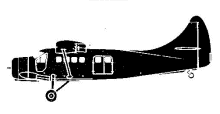Incident Overview

Description
Due to a minor change in schedule, the aircraft was incorrectly loaded for a routine transport mission to two UN-bases in Egypt. Consequently, on arrival at the first base, the freight that was to be unloaded was inaccessible. The captain thereupon decided to continue to the 2nd stop, unload the freight for it, then return. The aircraft was loaded to 98% of its limit weight. The field elevation was 1700 ft msl and the temperature 98 deg F (36,7 C). The combination of these factors rendered the aircraft sluggish in the air, immediately after takeoff. The pilot proceeded with the adjustment of the flap position to the climb position. He apparently performed this operation in a mechanical manner which induced the aircraft to sink. He attempted to counter this by pulling back on the control column which only aggravated the situation, and the aircraft struck the ground heavily. The pilot persisted in his attempt to take off and the aircraft bounced twice more before finally coming to rest and bursting into flames. Three of the four occupants escaped but two were severely burned and died later. The cause of the accident is considered to be faulty technique on the part of the pilot, in that he raised the flaps with insufficient care and did not take into full account the heavy load being carried and the prevailing weather conditions.
Source of Information
http://www.115atu.ca/Files/1861%20CC123%20Accident.pdf, http://www.ody.ca/~bwalker/RCAF_3650_3699_detailed.htmlhttp://www.115atu.ca/Files/1861%20CC123%20Accident.pdf, http://www.ody.ca/~bwalker/RCAF_3650_3699_detailed.htmlPrimary Cause
Faulty technique in flap adjustment, inadequate consideration of load and weather conditions.Faulty technique in flap adjustment, inadequate consideration of load and weather conditions.Share on:




